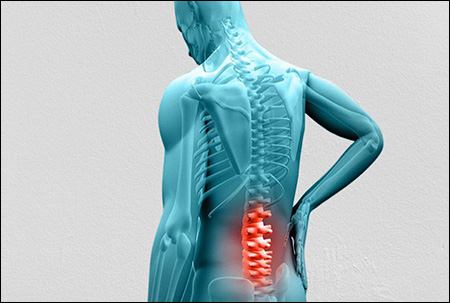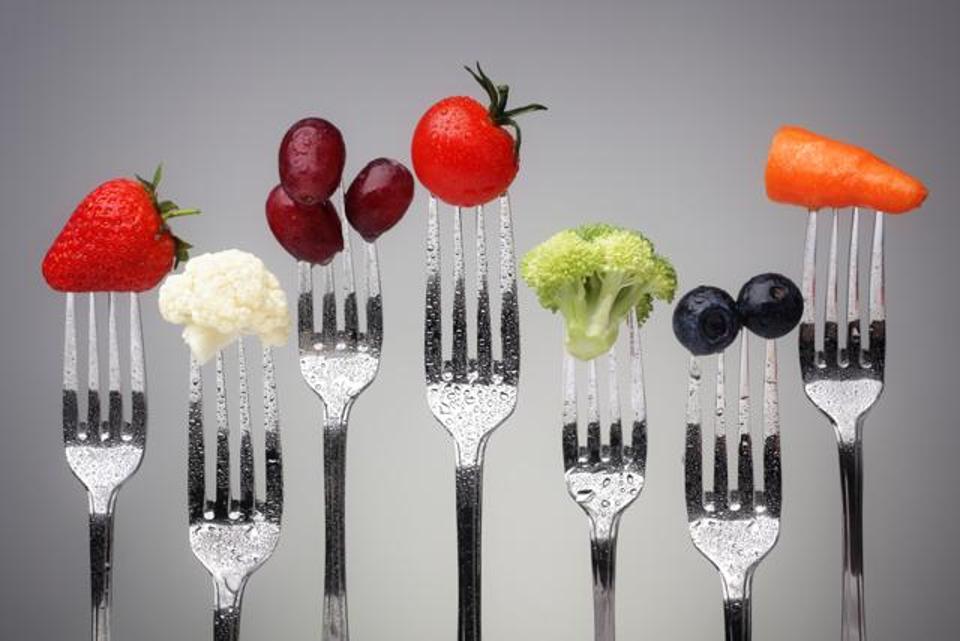Research Shows That 97 Percent of Herniated Discs Do Not Require Surgery. How Ayurveda Can Treat It
Abstract
Herniated discs refers to rupture of the intervertebral disc due to ageing, incorrect posture, obesity and accident. These discs are the protective cushion like pads and act as shock absorbers. It is also called a slipped disc. Here in this article we will discuss herniated discs that do not require surgery and it can be managed with the help of ayurveda.

Introduction
Herniated disc is a very painful condition. In this rupture of intervertebral discs occur due to many reasons such as ageing, incorrect posture and other reasons. The people who are obese are more prone to this disease. The most common symptoms of herniated discs are numbness, pain and tingling sensation in the affected area. This problem can be diagnosed easily with the help of physical examination or imaging. Nowadays people opt for surgery but 97 percent of herniated discs do not require any surgery, it can be easily manageable with the help of some ayurvedic herbs and some therapies such as abhyang, snehan, sweden and shirodhara etc. Let’s discuss in detail.
Causes
- Aging
- Incorrect posture
- Obesity
- Fall
Symptoms
Most herniated discs occur in the lower back but it can also occur in the neck and other regions. Its signs and symptoms depend on where the disc is present. Some of its symptoms are as follows.
1. Pain
In this case patients feel pain in the calf, thigh, buttocks and part of the foot.
2. Numbness
People who have herniated discs having numbness or tingling sensation in different body parts.
3. Weakness
Due to this problem it affects the ability to hold items.
Risk factors
-
-
- Weight
- Occupation
- Genetics
- Smoking
- Frequent driving
- Being sedentary
-
Diagnosis
1. Physical examination
In this doctor examines the patient’s reflexes, sensitivity to touch, walking ability, range of motion, muscle strength and location of painful region.
2. Imaging
It involves various test such as CT scan, myelogram, discogram, X Ray scans, MRI scans and CT scan
Prevention
-
-
- Exercise
- Maintain good posture
- Maintain a healthy weight
- Quit smoking
-
Treatment
1. Medication
-
-
- Nonsteroidal anti-inflammatory drugs- ibuprofen and naproxen etc.
- Opioids
- Muscle relaxants
- Nerve pain medications
-
2. Physical therapy
A physical therapist can recommend various exercises according to the patient’s symptoms.
3. Surgery
-
-
- Discectomy- removing of all parts of discs
- Nucleotomy- removal of soft centre of discs with the help of laser excision
- Laminectomy- removal of part of the vertebrae
- Spinal fusion- joining of vertebrates together
- Disc replacement- replacement of discs with artificial implants.
-
Ayurvedic overview
According to ayurveda this disease can be correlated with aggravation of vata dosha because vata is essential for movement and all physiological functions. As the age increases vata aggravation occurs and causes many vata disorders. Herniated discs can be manageable easily with the help of ayurvedic herbs and some therapies. The therapies which are useful in the management of herniated discs are as follows
-
-
- Snehana
- Kati Basti
- Nasya
- Basti
- Dhanyamla Dhara
- Swedna
- Pizhichil
- Shirodhara
-
Let’s discuss these therapies in detail
1. Snehana
It is an ayurvedic massage that can be done on the whole body or affected part. Abhyanga is one of the commonly used techniques to perform massage. It mainly balances tha aggravated vata dosha and strengthens bones, tissue and ligaments. It also reduces the pain, fatigue and relaxes the mind.
2. Kati Basti
In this procedure a frame is made on the affected area and this frame is poured with medicated oil. This procedure is done for a certain period of time and the temperature of the oil should be the same throughout the process.
3. Nasya
In this procedure medicated oil is installed into the nasal cavity. This procedure is very helpful in the management of the symptoms of this disorder.
4. Basti
In this therapy medicated oil is introduced into the intestine through a rectal route. This is the best therapy for management of aggravated vata.
5. Dhanyamla Dhara
In this procedure mainly two ingredients are used such as dhanya and amalaki. The medicated liquid is made from these ingredients and poured on the affected body part. This procedure is very useful in improving the blood circulation and it reduces the pain and body ache.
6. Swedna
It involves many procedures to induce sweating. It widens the channels and liquefies the ama and it is expelled out of the body using panchkarma therapies. It is very helpful in relieving the stiffness and heaviness. This is the best therapy in the management of herniated discs.
7. Pizhichil
This therapy is done by two therapists in which lukewarm oil is used and the therapy is done in two positions i.e. sitting and lying. This therapy should be done for about 10 days.
8. Shirodhara
This therapy involves pouring medicated oil over the forehead. It improves sleep which is disturbed in most of the painful conditions.
Ayurvedic herbs which are useful in the management of herniated disc are
-
-
- Shunthi
- Rasna
- Ashwagandha
- Guduchi
-
1. Shunthi
Shunthi (Zingiber officinale) is a wonder herb that acts on the respiratory and digestive systems. This herb is very useful in the balancing of three doshas. This herb has many properties such as pain relieving, aphrodisiac, expectorant and digestive etc. It is very useful in the management of pain and spasms.
2. Rasna
This herb is very useful in the management of all bone related disorders such as sandhigatvata and aamvata etc. It also improves heaviness and heat in the body. So this herb is highly useful in the management of herniated discs.
3. Ashwagandha
Ashwagandha is well known for boosting the immune system and strengthening the body. This herb relieves pain and heals the tissue. Due to analgesic and tissue healing effects it is very useful in the management of this disease.
4. Guduchi
Guduchi is an ancient herb that acts on the digestive and circulatory system. It is very useful in improving the overall strength of the body and management of herniated discs.
Herbal remedies for herniated disc by Planet Ayurveda
Planet ayurveda is a worldwide company which treats humans as well as animals. This is a GMP certified company. All the medicines made by this company are natural and free from side effects. This company makes medicines under the observation of MD ayurveda doctors. Planet Ayurveda makes medicine in the form of tablets, syrup and churna. All the products are gluten free. In case of herniated disc following products are offered by Planet ayurveda
Product list
-
-
- Boswellia Curcumin
- Yograj Guggul
- Hakam Churna
- Aamvatantak Churna
- Maha Triphala Ghrit
-
Product Description
1. Boswellia Curcumin
Boswellia curcumin is in the form of capsule and it contains mainly two herbs i.e. Shallaki (Boswellia serrata) and curcumin (Curcuma longa). These two herbs show antiinflammatory actions and help in relieving joint pain. It is very useful in the management of various conditions such as osteoarthritis, rheumatoid arthritis, cervical spondylitis, ankylosing spondylitis, crohn’s disease and asthma etc. Both of the herbs are safe and support joint health. It is also rich in antioxidant property which helps in the movement of joints.
Dose:- 1 capsule twice daily after meals with plain water.
2. Yograj guggul
Yograj guggul is widely used ayurvedic medicine in the management of various bone diseases. The main ingredients of this tablet are Guggulu (Commiphora mukul), musta (Cyperus rotundus), chitraka (Plumbago zeylanica), amalaki (Emblica officinalis) and vibhitaki (Terminalia bellirica) etc. These herbs balance the vata and relieve pain and stiffness. It is very helpful in the management of lumbar and cervical spondylosis. Thus this is the best medicine in the management of herniated discs.
Dose:- 2 tablets twice daily with lukewarm water after meals
3. Hakam Churna
It is in the form of churna and contains many herbs such as Chandrashoor (Lepidium sativum), kalonji (Nigella sativa), methi (Trigonella foenum) and ajwain (Trachyspermum ammi) etc. Acidity and indigestion aggravates the vata dosha and it causes many problems such as pain and stiffness. Thus, This churna is very useful in the management of indigestion and acidity related problems. It also has anti-inflammatory properties and helps in the management of various disorders such as cervical spondylitis, stiffness, osteoarthritis, sciatica and rheumatoid arthritis etc.
Dose:- ½ tsp powder twice daily with hot water after meals
4. Aamvatantak Churna
Aamvatantak churna is made up of widely used ancient herbs. Some of its main herbs are ashwagandha (Withania somnifera), suranjaan (Colchicum autumnale), gorakhmundi (Sphaeranthus indicus), haridra (Curcuma longa) and sonth (Zingiber officinale). It has anti-inflammatory properties that help to reduce inflammation of the joints, tenderness and pain. It is also useful to boost immunity and give relief from swelling. Ashwagandha present in this churna is a wonderful herb that is very helpful in the management of various disorders such as rheumatoid arthritis and spondylitis etc and it also gives strength to the body.
Dose:- 1 tsp twice daily with plain water or kumari saar or aloe vera juice after meals.
5. Maha Triphala Ghrit
It is an ayurvedic medicine in the form of ghee and it contains many dravyas such as Kwath dravya of triphala in which amalaki (Emblica officinalis), bibhitaki (Terminalia bellirica) and haritaki (Terminalia chebula) are present. Along with triphala bhringraj (Eclipta alba), vasa (Adhatoda vasica) and other dravyas also present. It shows many properties such as cardioprotective, neuroprotective, antioxidant, adaptogenic, antimicrobial, antiinflammatory, anti obesity and anti diabetic properties etc. Thus this ghrit is very useful in the management of herniated discs.
Dose:- 3 to 6 gram mixed with mishri after meals
Conclusion
It refers to rupture of the intervertebral disc due to ageing, incorrect posture, obesity and many other reasons. These discs are the protective cushion like pads present between the vertebrae. These discs act as shock absorbers. It is also called a slipped disc. The most common symptoms of herniated discs are numbness, pain and tingling in the affected area. Here in this article we have discussed that 97 percent of herniated discs do not require any surgery, it can be easily manageable with the help of some ayurvedic herbs and some therapies such as abhyang, snehan, sweden and shirodhara etc.








